Yugu Mural Street (유구벽화거리)
18.0Km 2024-12-24
34-5 Sijang-gil, Yugu-eup, Gongju-si, Chungcheongnam-do
Yugu Mural Street is centered around a textile factory that has operated since the 1950s. The walls surrounding the factory feature murals of elderly women weaving at looms, spinning machines, and vibrant tile mosaics. Visitors can learn about the history of the textile industry through dioramas, while the Yugu Textile History Exhibition Hall displays various weaving machines. With a traditional market nearby, it's an excellent destination for a combined tour.
Geumisanseong Fortress (금이성)
18.1Km 2025-05-20
Songseong-ri, Sejong-si
+82-44-300-3444
Geumiseong is a mountain fortress built on the summit of Geumseongsan Mountain, which rises 430 meters above sea level. It overlooks Jeonui and Cheonan to the north and Geumgang River to the south. The architecture style of Geumiseong Fortress is a combination of the
styles of the Baekje dynasty and the early Unified Silla. Based on the relics found inside the fortress, it is thought to have been built in the Goryeo period. The robustness of the fortress takes advantage of the rugged topography, so much so that it had been known as ironclad bastion among common people.
The eastern side of the fortress has considerably collapsed, but the southern part is in a relatively good condition. The western and northern walls are also in bad conditions.
Some earthenware pieces were found where there once stood a watchtower. Also, some pieces of roof tiles were found where there was a fortress building in the central part of the fortress on mountain summit. The earthenware pieces are hard porcelain and soft glass wares like bowls and pots. The tile pieces mostly feature fishbone patterns in dark gray color.
Yugu Pink Muhly Garden (유구핑크뮬리정원)
18.2Km 2025-02-04
648-18 Yuguri, Yugu-eup, Gongju-si, Chungcheongnam-do
Yugu Pink Muhly Garden boasts a breathtaking sea of cotton candy-like pink muhly, with its flowers peaking in fall. The garden also features an eco-playground with a sand play area, a play tunnel, and spider nets. Nearby attractions include a hydrangea garden, a traditional market, a mural street, and a textile history exhibition hall, making it an ideal spot for a combined tour.
Lee YoungJun Clinic of Korean Medicine (이영준한의원)
18.3Km 2025-07-07
(4th-5th Floors, Yongam Building), 388 Bongjeong-ro, Seobuk-gu, Cheonan-si, Chungcheongnam-do
Lee YoungJun Clinic of Korean Medicine is a non-surgical treatment hospital that addresses the structural imbalance of the body and the abnormalities of the cerebral nervous system caused by the imbalance through total body treatment (TBT) by balancing the jaw joint to build the body's immunity and self-reproductive power and help the body heal itself.
We treat common conditions such as temporomandibular disorders, herniated discs, and pain diseases, as well as rare and incurable diseases and systemic diseases such as dystonia, Tourette's syndrome, fibromyalgia, and trigeminal neuralgia.
Currently, as a registered hospital serving foreign patients, we have received more than 200 international patients from 45 countries around the world. We continue to share our numerous clinical cases for different diseases through our YouTube channel. We also strive to promote advancements in medical technology at our hospital through various publications and ongoing seminars every year.
Biamsa Temple - Sejong (비암사(세종))
18.4Km 2025-05-20
137, Biamsa-gil, Sejong-si
+82-44-863-0230
The origin of Biamsa Temple is unknown, but the temple's architectural features suggest that it was built during the mid Goryeo dynasty period (918-1392). The Geungnakbojeon Hall and the three-storied pagoda inside the temple have been designated as Cultural Properties of Chungcheongnam-do Province. The flamboyang and delicately crafted datjip (canopy) inside the Geungnakbojeon Hall was restored in 1657 during the 8th year of King Hyojong's reign.
In the yard in front of the Geungnakbojeon Hall stands the three meter-high Samcheungseoktap (three-storied stone pagoda). With the discovery of Samyeongunsang stone statues near the top of the pagoda, Biamsa Temple became more widely known to the public. Among the stone statues, Gyeyumyeongjeonssi-amitabul-samjonseoksang (three Buddha statues) has been named as National Treasure No. 106, and Gichukmyeong-amitayeorae-jebulbosalseoksang (statue of Amitabha bodhisattva) and Mireukbosal-bangaseoksang (statue of Maitreya bodhisattva) have been designated as National Treasures No. 367 and No. 368, respectively. The stone statues are preserved in National Museum of Korea. Meanwhile, the three-storied stone pagoda was designated as Tangible Cultural Property No. 119 of Chungcheongnam-do Province on July 19, 1985.
Korea History and Culture Park (한민족역사문화공원)
18.4Km 2025-01-08
284-88, Gyocheonjisan-gil, Dongnam-gu, Cheonan-si, Chungcheongnam-do
+82-41-620-6700
The Korea History and Culture Park is located in one of the most relaxing places on earth.The park is based on Korea's creation myth with many sculptures and exhibitions about the Korean people's history and culture. Among the statues are important religious and philosophical figures who taught and promoted peace on earth.
Sono Belle Cheonan Ocean Adventure (소노벨 천안 오션어드벤처)
18.9Km 2024-06-05
200 Jonghaphyuyangji-ro, Seongnam-myeon, Dongnam-gu, Cheonan-si, Chungcheongnam-do
Sono Belle Cheonan Ocean Adventure is an expansive water park attached to the Sono Belle Cheonan resort. Inspired by renowned historical sites found in Rome, Venice, and Spain, the park delivers a unique thematic experience. The facility is divided into three main areas: the indoor zone, the outdoor zone, and the hot springs section, providing entertainment and relaxation for all seasons. Guests can enjoy a variety of thrilling rides, including the Tornado Pool, Speed Racing, Body Bowl Slide, Wild Extreme River, and the Viking Tower.
The Independence Hall of Korea (독립기념관)
19.6Km 2024-10-28
1, Dongnipginyeomgwan-ro, Dongnam-gu, Cheonan-si, Chungcheongnam-do
The Independence Hall of Korea collects, preserves, displays, and researches Korean historical documents and relics from the past to the present, focusing on the independence movements during the Japanese colonial period. The Independence Hall officially opened on the anniversary of Independence Day in 1987 thanks to donations from the public.
Deulkkot (들꽃)
19.7Km 2016-10-20
110, Hoseodae-gil, Dongnam-gu, Cheonan-si, Chungcheongnam-do
+82-41-522-0280, +82-41-522-0580
Deulkkot specialties include hanjeongsik (Korean course meal) and meat dishes. The restaurant has a beautiful garden, so it’s a great place to dine and enjoy the natural scenery at the same time.
Unjusanseong Fortress (운주산성)
19.7Km 2021-08-31
Migok-ri, Sejong-si
+82-44-300-3423
Unjusanseong Fortress, also known as Gosansanseong Fortress, is a cultural heritage of the Baekje dynasty. This is a mountain fortress built along the surrounding three mountain peaks in the westernmost and southernmost parts of Unjusan Mountain. The stone fortress wall, which borders three villages in Jeondong-myeon and two villages in Jeonui-myeon, is 3,210 meters long and two meters wide with a x_height that ranges from two to eight meters. The walls follow the natural geographical features of the mountain range, with the southern walls surrounding the mountain's peak.
Remnants of a village can still be observed within the fortress walls, such as the fortress gate and a ritual site. Pieces of earthenware from the Baekje period, porcelain from the Goryeo and Joseon periods, and broken tiles from the Baekje, Goryeo and Joseon periods have been discovered around the site as well.

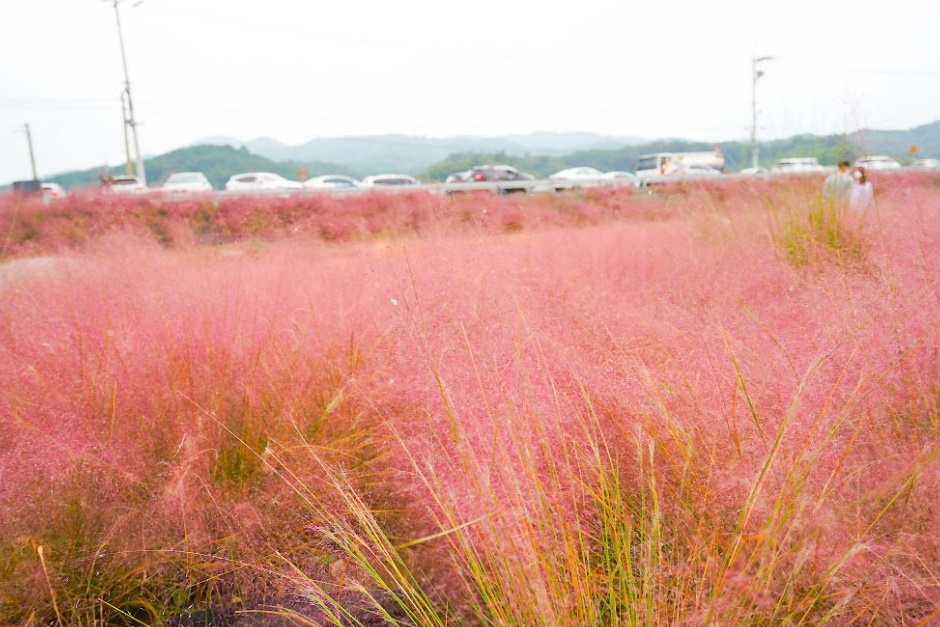
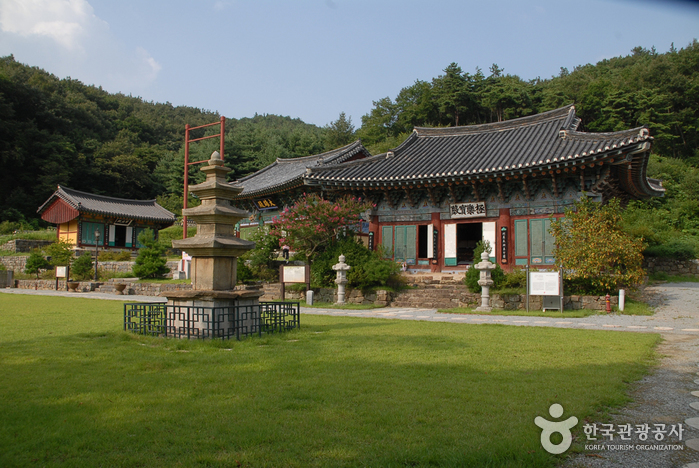
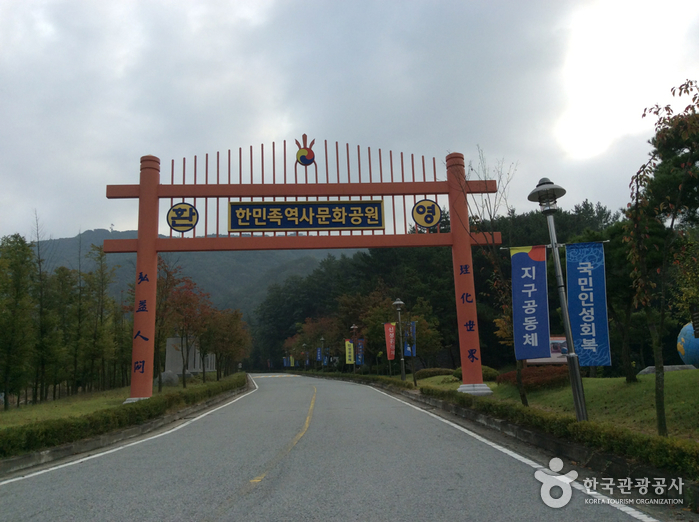
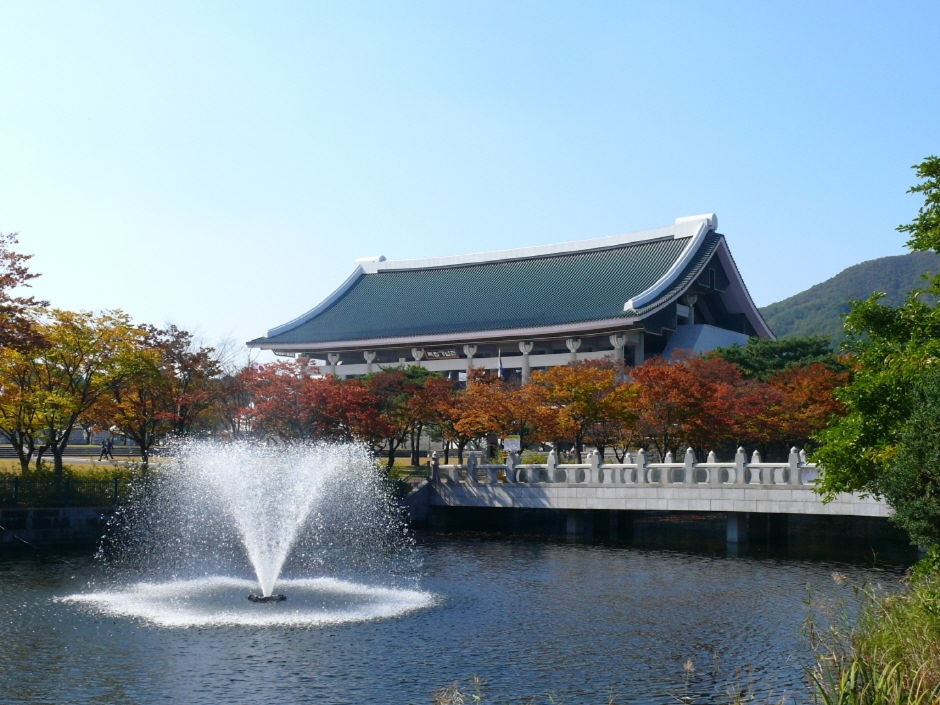
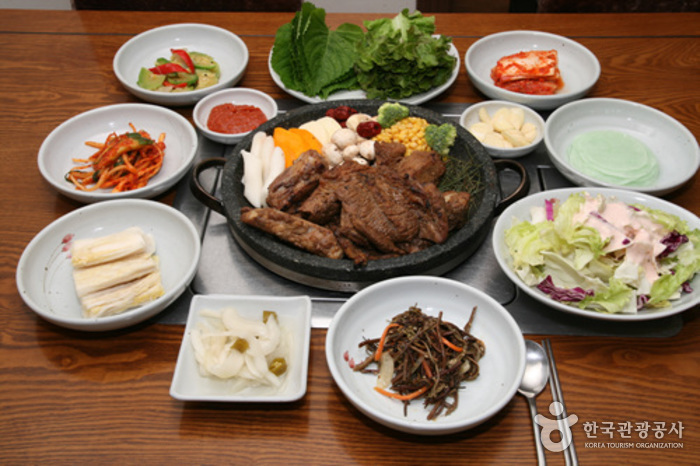
 English
English
 한국어
한국어 日本語
日本語 中文(简体)
中文(简体) Deutsch
Deutsch Français
Français Español
Español Русский
Русский